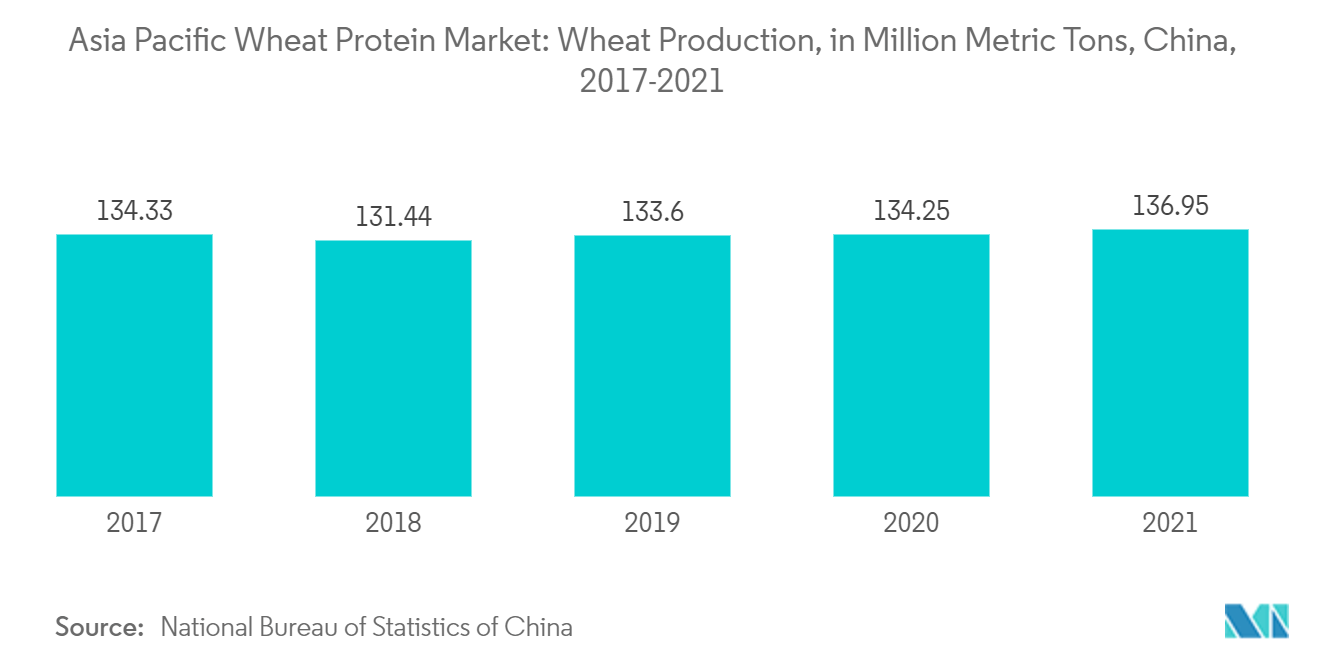Market Trends of Asia Pacific Wheat Protein Industry
Rising Demand for Plant-Based Food & Beverages
- There is a growing demand for plant-based food and beverages across the region. Especially, easy-to-cook or ready-to-eat meals have been gaining traction due to the busy lifestyle, rising healthy packaged food consumption, rising consumption of breakfast cereal, changing dietary patterns, and an increasing number of convenience stores that are driving the demand for wheat protein ingredients among packaged food manufacturers across the region.
- The shift in consumer demand from animal protein to plant protein can be witnessed with the expansion of the wheat protein market. This gradual inclination toward a plant-based diet is largely associated with different factors, such as sustainability issues, health awareness, ethical or religious views, and environmental and animal rights.
- Hence, the countries in the region have been importing substantial amounts of wheat proteins to meet the demand for the same. For example, according to the Japan Plant Protein Food Association, the shipment volume of wheat proteins in the nation was approximately 18.35 thousand metric tons in the year 2022.
- Additionally, the increased production of wheat leading to the easy availability of raw materials for players offering wheat protein isolates and other wheat protein products are expected to drive the demand for the products.
- As per the National Bureau of Statistics of China, in the year 2021, the production of wheat across the nation was 136.95 million metric tons. The economical cost of the raw materials helps the manufacturers offer their wheat protein products at competitive prices. The increasing application of wheat proteins for food and beverages and other such industries is expected to boost the market studied during the forecast period.

China and Japan are Expected to Have the Fastest Growing Market
- Countries such as China and Japan are expected to have the fastest-growing market in the Asia Pacific region, owing to the inclination of these consumers toward protein alternatives, such as plant protein, due to the reduction in animal protein intake, weight management, and general health maintenance. This has led to a rise in the daily intake of wheat protein, as it is one of the prominent plant-based proteins gaining traction in the Chinese market.
- In these countries, wheat protein is majorly used in bakery and meat substitute products. The great demand is due to the wide range of functionalities of wheat gluten, such as viscoelasticity, texturing, foaming, emulsification, and binding, leading to its wide-scale usage in bakery products and its role as an excellent meat alternative for consumers preferring vegetarian food products are expected to drive its market in the countries. The growth of such end-user industries can also play a significant role in the expansion of the wheat protein market across the region.
- According to the All Nippon Kashi Association, the production volume of cookies in Japan was valued at 249.9 thousand metric tons in the year 2022. According to the Japan Ministry of Tourism, there has been a steady increase in the number of the vegetarian population coming into the country. Most of the inbound vegetarian tourist consumers consume plant proteins regularly, which gives opportunities to the companies to process better quality plant-based proteins. Additionally, there has been a rise in awareness among the population residing in these nations regarding plant-based foods.
- For instance, according to a survey conducted in Japan by NH Foods Ltd., a food processing company, in 2022, 25.2% of respondents said that they knew about plant-based meat alternatives, and 33% responded that they had heard about them. As wheat protein is used in plant-based meat products, these factors can also play a crucial role in driving the market studied across the region.


